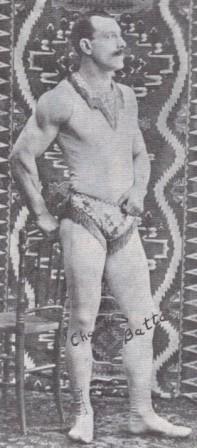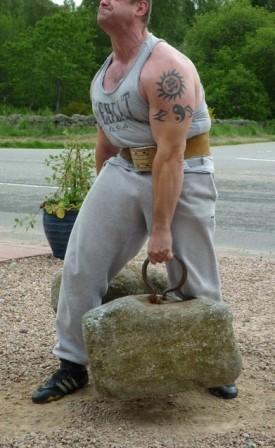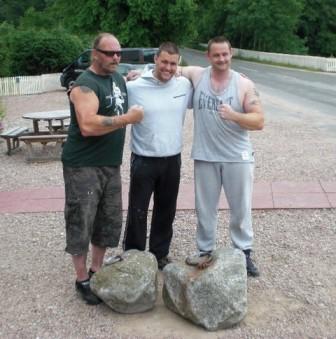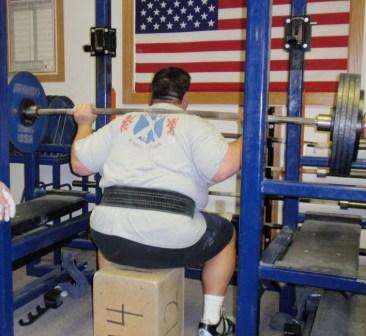New Lifts – The Chin Up and Pull Up
by Al Myers
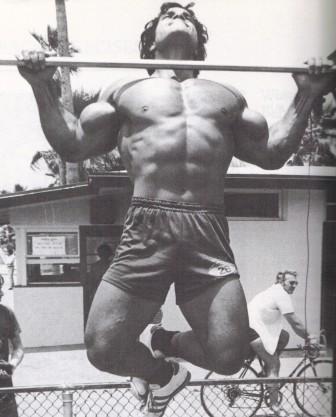
Pull Ups have always been a popular training exercise, as illustrated by this picture of Franco Columbo in Arnold's book Encyclopedia of Modern Bodybuilding.
Last spring, Dave Glasgow asked me why the Chin Up and Pull Up were not All-Round Lifts. I didn’t have an answer for him. It would seem logical that two of the oldest exercises known to man should be included amongst our All-Round lifts. We have over 200 lifts and I can’t imagine why these two had been left out. Early day All-Rounders often performed exercises involving body weight movements, and the Chin Up and Pull Up were usually part of their training program. So I told Dave to propose them for new lift approval, write the rules for them and hopefully, the membership would vote to accept them. I was glad to see this happen at the National Meeting, as they were accepted. These two common exercises can now be listed in the USAWA Rulebook and Record List alongside other more obscure lifts like the Zeigler Clean and the Scott Lift. Now records can be established officially in the Chin Up and Pull Up. Bill Clark once told me that one of the purposes of the USAWA is to provide an official competition for a lifter to perform a lift in which he/she specializes in that is not available in other organizations. Well, I can tell you this – the Chin Up and Pull Up have been contested from the playgrounds to the prisons for decades. It is about time an organization wants to oversee them as “official lifts”.
Practically ever gym has a Chin Up bar, and most lifters have trained these two lifts at least at some point in their life. Dave had these words to say about these two lifts in drumming up support for their approval, “The Pull Up/Chin Up has long been a staple of the strength community and is a valid test of upper body strength. The basic Pull Up is an exercise that involves multiple muscles of the upper back and arms to work in coordination with one another in order for the exercise to be executed.”
The Rules for the Pull Up
The crossbar used shall be a straight bar with a diameter between 1 inches and 2 inches. The width of hand placement on the crossbar shall be at the discretion of the lifter. The lifter may use any platform necessary to reach the crossbar. The bar is to be grasped with the palms facing away from the body. The weight shall be affixed to the lifter by way of hanging the weight on a belt attached to the waist of the lifter. The lift will begin on command from an official when the lifter is hanging at arms’ length from the crossbar, motionless, and with feet completely off the floor or any support. The lifter must then pull the body to the crossbar to a position where the point of the chin is above the crossbar. Once motionless, the lifter will receive a command that ends the lift. No “kipping” (the motion of excessive kicking of the legs to obtain a mechanical advantage) is allowed. The weight of the lifter is NOT to be included in the total weight lifted.
The Rules for the Chin Up
The rules of the Pull Up apply, with the exception that the palms of the hands must be facing toward the body of lifter.
Both of these lifts will be added to the 4th Edition of the USAWA Rulebook, which will be available August 1st.
Chin Up Trivia: John Davis, at a body weight of 177 pounds, did a Chin Up with 171 pounds of extra weight attached to him in 1938!
